dangerdave
Chief Bottlewasher
- Joined
- Jul 13, 2011
- Messages
- 2,729
- Reaction score
- 898
I am doing a comparison of the Lavin EC-1118 and the Lavin 71B-1122 in a side-by-side Dragon Blood recipe study. I am using the basic DB recipe and presser method, and taking every effort to make these two batches exactly the same except for the different yeasts.
Day 1: (7-25-13) I gathered all of my ingredients...
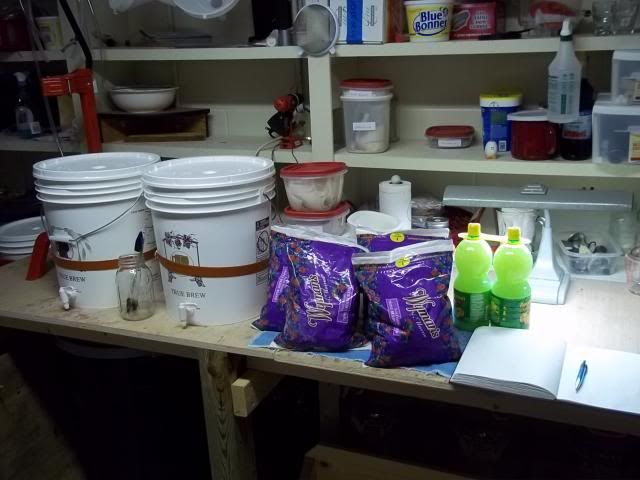
Each batch got the following...
20 cups of sugar
48oz of Real Lemon Juice
6# of Wayman's Triple Berry Blend (frozen then thawed and placed in a fine mesh nylon bag tied shut) and all the related juices
1 tsp tannin
3 tsp yeast nutrient
1 tsp yeast energizer
3 tsp pectic enzyme
water to six gallons
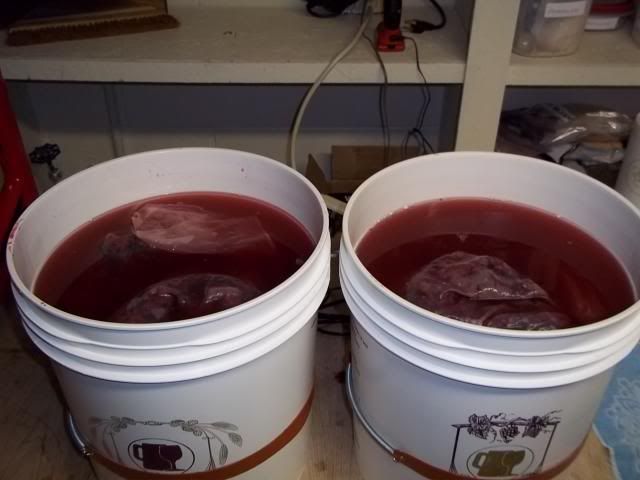
SG for each was exactly 1.080 @ 70F. The fermenters were covered for overnight resting...
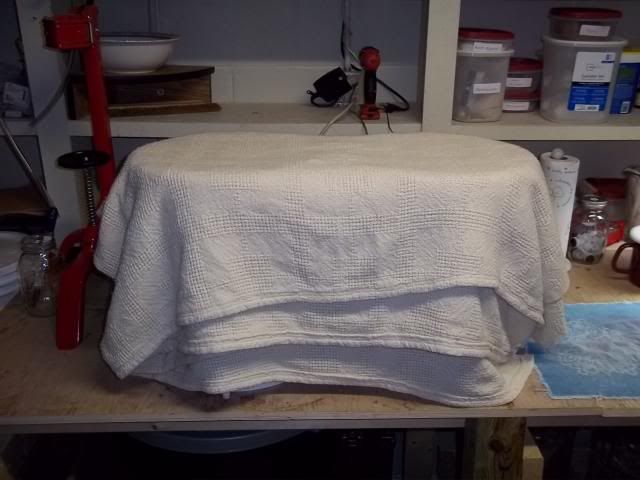
Day 2: Here goes the yeasties! Rehydrated per instructions and stirred into their respective musts (left to right)...
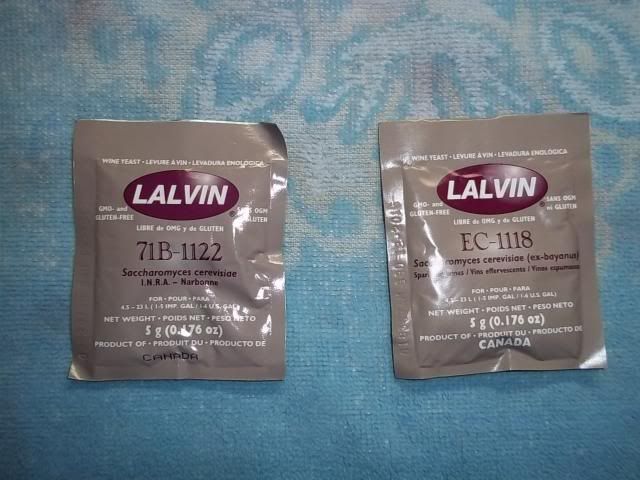
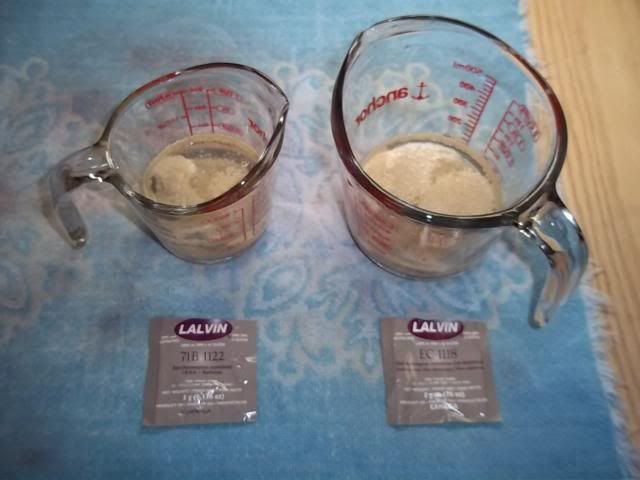
Day 3: Squeezing and stirring begins! Both batches were warm and showed a foamy cap with very active fermentation. SG = 1.065 @ 82F. I removed the heavy blanket and covered them with a lighter one.
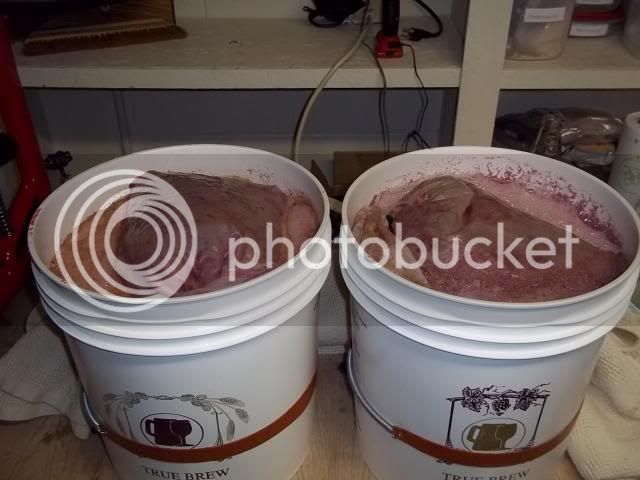
Each fruit bag was squeezed equally, and vigorous stirring followed. I cleaned and sanitized all instruments in between batches to avoid cross contamination from the other yeast.
Day 4: Squeeze and stir!
EC-1118 (left) batch was SG = 1.030 @ 80F.
71B-1122 (right) batch was SG = 1.035 @ 80F.
Note: Both batches---aside from the slight SG difference---appeared exactly the same. By all signs (smell, cap, bubbling, etc), they could have been the same yeasts. Ditto. I raised the brew belts a few inches on the buckets to drop the temp slightly as fermentation continues.
Updates to come.
Day 1: (7-25-13) I gathered all of my ingredients...

Each batch got the following...
20 cups of sugar
48oz of Real Lemon Juice
6# of Wayman's Triple Berry Blend (frozen then thawed and placed in a fine mesh nylon bag tied shut) and all the related juices
1 tsp tannin
3 tsp yeast nutrient
1 tsp yeast energizer
3 tsp pectic enzyme
water to six gallons

SG for each was exactly 1.080 @ 70F. The fermenters were covered for overnight resting...

Day 2: Here goes the yeasties! Rehydrated per instructions and stirred into their respective musts (left to right)...


Day 3: Squeezing and stirring begins! Both batches were warm and showed a foamy cap with very active fermentation. SG = 1.065 @ 82F. I removed the heavy blanket and covered them with a lighter one.

Each fruit bag was squeezed equally, and vigorous stirring followed. I cleaned and sanitized all instruments in between batches to avoid cross contamination from the other yeast.
Day 4: Squeeze and stir!
EC-1118 (left) batch was SG = 1.030 @ 80F.
71B-1122 (right) batch was SG = 1.035 @ 80F.
Note: Both batches---aside from the slight SG difference---appeared exactly the same. By all signs (smell, cap, bubbling, etc), they could have been the same yeasts. Ditto. I raised the brew belts a few inches on the buckets to drop the temp slightly as fermentation continues.
Updates to come.






